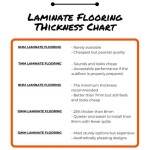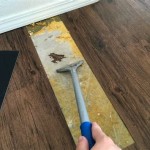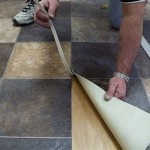Multi-Tools for Efficient Laminate Flooring Cuts
Laminate flooring, known for its durability, affordability, and aesthetic appeal, is a popular choice for residential and commercial spaces. Installing laminate flooring often requires precise cuts to fit the material around doorways, corners, pipes, and other obstacles. While various tools can be used for this purpose, the multi-tool has emerged as a versatile and efficient option for achieving professional-looking results. A multi-tool, also known as an oscillating multi-tool, combines a high-speed oscillating motion with a variety of interchangeable blades and attachments, making it suitable for cutting, sanding, scraping, and more. Its compact size and maneuverability provide distinct advantages when working with laminate flooring, particularly in tight spaces.
This article will explore the advantages of using a multi-tool for cutting laminate flooring, discuss factors to consider when selecting a multi-tool, and provide guidance on proper techniques for achieving clean and accurate cuts.
Key Advantages of Multi-Tools for Laminate Flooring
Several factors contribute to the popularity of multi-tools among laminate flooring installers, both professionals and DIY enthusiasts. These advantages stem from the tool's versatility, precision, and ease of use.
1. Precision and Control: Multi-tools offer exceptional precision and control, which are crucial for achieving clean and accurate cuts on laminate flooring. The oscillating motion of the blade, combined with the tool's compact size and ergonomic design, allows users to carefully guide the cut along the desired line. This is particularly beneficial when making intricate cuts around door frames, pipes, or other obstacles. Unlike circular saws or jigsaws, which can be more difficult to control in tight spaces, multi-tools provide a higher degree of maneuverability, minimizing the risk of errors and wasted material. The ability to make plunge cuts, where the blade is lowered directly into the material without needing a starting hole, is another significant advantage for creating openings for pipes or vents.
2. Versatility and Multi-Functionality: The versatility of multi-tools extends beyond simply cutting laminate flooring. With the appropriate attachments, a multi-tool can also be used for sanding, scraping, and even grout removal. This eliminates the need for multiple specialized tools, saving both time and money. For laminate flooring installations, this versatility proves useful for tasks such as undercutting door jambs, trimming baseboards, and smoothing rough edges. The ability to switch between different attachments quickly and easily makes the multi-tool a valuable asset for a variety of tasks encountered during the installation process.
3. Reduced Dust and Noise: Compared to some other power tools used for cutting laminate flooring, such as circular saws, multi-tools generally produce less dust and noise. This is due to the oscillating motion of the blade, which generates less airborne particulate matter. While dust collection systems can be used with some multi-tools to further minimize dust, the inherent design of the tool contributes to a cleaner and quieter working environment. This is particularly important for indoor installations where dust and noise pollution can be disruptive to occupants.
Selecting the Right Multi-Tool for Laminate Flooring
When choosing a multi-tool for cutting laminate flooring, several factors should be considered to ensure optimal performance and longevity. These factors include power, speed, blade compatibility, ergonomics, and additional features.
1. Power and Speed: The power of a multi-tool is typically measured in amps or volts. Higher amperage or voltage ratings generally indicate greater power output, which is important for cutting through thicker or denser laminate flooring materials. Variable speed control is another desirable feature, allowing the user to adjust the oscillation speed to match the task at hand. Lower speeds are often preferred for more delicate cuts or when working with softer materials, while higher speeds can be used for faster cutting in thicker materials. A multi-tool with sufficient power and variable speed control will provide greater flexibility and control during laminate flooring installations.
2. Blade Compatibility: The availability and compatibility of blades are crucial considerations when selecting a multi-tool. Laminate flooring requires specialized blades designed for cutting through the hard surface layers without chipping or splintering. Bi-metal blades with fine teeth are generally recommended for this purpose. It is essential to ensure that the multi-tool is compatible with a wide range of blades from reputable manufacturers. The blade changing mechanism should also be easy to use, allowing for quick and efficient blade replacements during the installation process. Some multi-tools utilize tool-free blade change systems, which further simplify this task.
3. Ergonomics and Handling: The ergonomics of a multi-tool play a significant role in user comfort and control, especially during extended periods of use. A lightweight and well-balanced tool will reduce fatigue and improve maneuverability. The grip should be comfortable and secure, providing a firm hold even when wearing gloves. Vibration reduction features can also enhance user comfort and reduce the risk of hand-arm vibration syndrome (HAVS). Consider the overall design and weight distribution of the tool to ensure a comfortable and controlled cutting experience.
4. Corded vs. Cordless: Multi-tools are available in both corded and cordless versions. Corded multi-tools provide a consistent power supply and are generally more powerful, making them suitable for heavy-duty applications. Cordless multi-tools offer greater portability and freedom of movement, allowing users to work in areas without access to electrical outlets. The choice between corded and cordless depends on the specific needs and preferences of the user. If portability is a primary concern, a cordless multi-tool with a high-capacity battery may be the best option. If consistent power is more important, a corded multi-tool may be preferred.
Techniques for Achieving Clean Laminate Flooring Cuts with a Multi-Tool
Proper technique is essential for achieving clean and accurate cuts on laminate flooring with a multi-tool. This includes selecting the correct blade, preparing the work surface, using appropriate cutting speed, and employing a steady hand.
1. Blade Selection: As mentioned previously, bi-metal blades with fine teeth are generally recommended for cutting laminate flooring. These blades are designed to cut through the hard surface layers without chipping or splintering. The blade should be sharp and in good condition. A dull blade will require more force and may result in a rough or uneven cut. Inspect the blade before each use and replace it as needed.
2. Preparation and Marking: Before making any cuts, it is essential to carefully measure and mark the laminate flooring. Use a pencil or marker to clearly indicate the cut line. For complex cuts, consider using a template or guide to ensure accuracy. Secure the laminate flooring to a stable work surface using clamps or a vise. This will prevent the material from shifting during the cutting process.
3. Cutting Speed and Pressure: Start with a lower cutting speed and gradually increase it as needed. Applying excessive pressure can overload the motor and cause the blade to bind. Allow the blade to do the work, guiding it gently along the cut line. Avoid forcing the tool or trying to cut too quickly. Maintaining a consistent cutting speed will help to ensure a clean and even cut.
4. Cutting Technique: For straight cuts, use a guide to keep the blade aligned along the cut line. For curved cuts, carefully follow the marked line, making small, incremental cuts. When making plunge cuts, slowly lower the blade into the material, maintaining a steady hand. Avoid twisting or rocking the tool, as this can damage the blade and the laminate flooring. Use a dust collection system, if available, to minimize dust and improve visibility.
5. Undercutting Door Jambs: One of the most common applications for multi-tools in laminate flooring installation is undercutting door jambs. To do this, place a piece of laminate flooring next to the door jamb to determine the desired cutting height. Use the multi-tool with a suitable blade to carefully cut along the bottom edge of the door jamb, creating a space for the laminate flooring to slide underneath. This creates a clean and professional-looking finish.
6. Safety Precautions: Always wear appropriate safety gear when using a multi-tool, including safety glasses, hearing protection, and gloves. Be aware of the potential hazards associated with the tool, such as flying debris and sharp blades. Keep your hands and fingers away from the blade during operation. Disconnect the tool from the power supply before changing blades or making any adjustments. Familiarize yourself with the tool's operating manual and follow all safety instructions.
Using a multi-tool for cutting laminate flooring offers numerous advantages in terms of precision, versatility, and ease of use. By selecting the right tool and employing proper techniques, both professionals and DIY enthusiasts can achieve clean and accurate cuts, resulting in a professional-looking and long-lasting laminate flooring installation. Consistent practice and adherence to safety guidelines are paramount for optimal results.

12 Ways To Use Oscillating Tools For Your Next Diy Project

Using An Oscillating Tool 6 Professional Uses Pro Reviews

12 Ways To Use Oscillating Tools For Your Next Diy Project

Dewalt Dwe315k Multi Material Oscillating Tool Kit Tools4flooring Com

Help And Advice

Oscillating Tool For Laminate Flooring Variable Sd Door Jambs Nail Cutting

Bosch Starlock Hard Wood Plunge Cut Multi Tool Blade 65mm Toolstation

How To Cut Skirting Board With A Multi Tool

Oscillating Multi Tool Buyers Guide Tooled Up Blog

Tool Review Bosch 18 Volt Ec Brushless Oscillating With Starlockplus System Wood Floor Business
Related Posts








